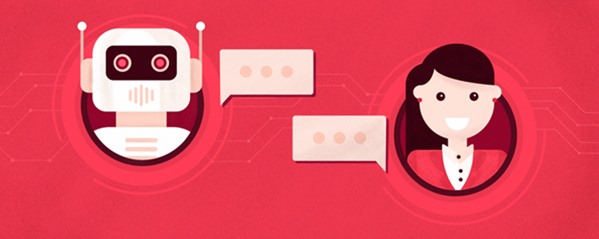
According to the 2022 Digital-First Customer Experience Report, 52% of surveyed consumers said they prefer online chat assistance, but only 31% of businesses offer chat support.
Chatbot support is gaining wide traction in all business forms since having an online presence is essential in an increasingly digitised marketplace. Customers demand easy access to making transactions and addressing grievances.
What is a customer request?
Some customer requests can be pretty straightforward, such as
- How to purchase an item?
- How to return a defective item?
- How to track the shipment status of an item?
Other customer requests may be more complicated, and may require more intensive assistance depending on the individual or business. In either case, providing an accessible and responsive chat assistance option can make the difference between earning a loyal customer, or alienating them.

Live chat vs chatbot support
One way to provide such assistance is via live chat with customer support representatives. This involves hiring agents trained to address queries, acting as mediators between the customers and the service providers, and providing personable yet efficient support.
Around 73% of customers prefer live chat as their primary means of communication with a business. However, live chat support is limited by labour since one representative can only attend to one customer at a time. This necessitates hiring more agents to keep up with the demands of a growing customer base.
An alternative to this is automated chatbot support. A chatbot is an AI programme meant to mimic human interaction and can provide cost-effective options for addressing customer requests. Unlike live chat support, a chatbot is capable of 24×7 functionality and attending to multiple customer requests simultaneously.
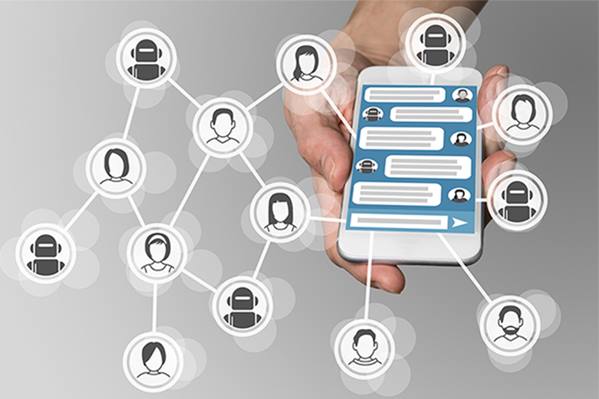
What are the benefits of chatbots for businesses?
Chatbot programs can range from simple AI, providing a standardized list of queries for a customer to select, or Intelligent Virtual Assistants (IVA), which are capable of closely replicating human speech. The latter allows a company to automate the benefits of live chat support, with the tradeoff being the vast development and implementation costs.
In a survey conducted by Userlike, 68% of respondents reacted positively to the quick response times provided by chatbots, and 54% of respondents claimed they would trust a chatbot for handling basic customer requests.
Furthermore, implementing chatbot support alongside live chat support enables the representatives to spend more time on complicated requests and grievances.
How to calculate ROI of ChatBot?
While customer satisfaction with chatbot support is quite apparent, its profitability can be gauged by comparing the ROIs of live chat support versus chatbot support. Return on Investment (ROI) is an equation that indicates the profitability of a given investment. It can be expressed as a function of two variables, the current value of the investment and the cost of investment.
ROI can be calculated as follows:

The cost of investment for live chat services will involve salaries for representatives and managers, as well as additional bonuses and benefits.
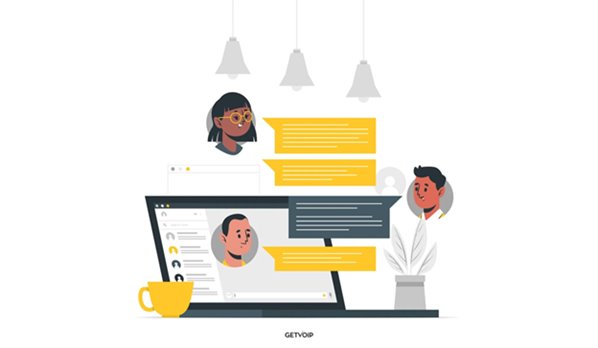
How much does it cost to provide a live chat service?
Suppose the following:
- a customer service agency receives 10,000 customer requests per day
- each live chat interaction has an average duration of 7 minutes
- each representative works an average of 8 hours, or 480 minutes, per day
The number of representatives required for this workload can be calculated as follows: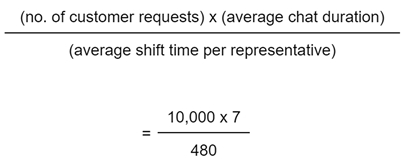
Therefore, approximately 146 representatives will be required. Accounting for other positions such as team leaders, supervisors, and managers, the cost of investment can be calculated as follows:
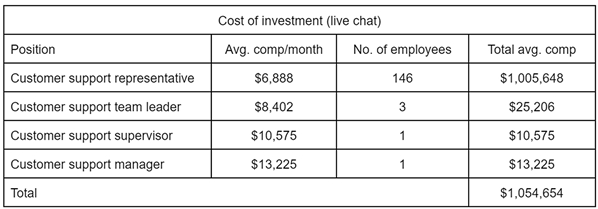
The compensation figures, which include salary plus bonuses and benefits, have been taken from Salary.com. These represent the average US nationwide salaries of technical customer support employees. While calculating such cost of investment, other expenditures such as office space, equipment, and other material costs must also be accommodated.
How much does it cost to build a chatbot?
The cost of investment for a chatbot involves building a chatbot and subsequent monthly costs, which include licensing and maintenance.
A chatbot can be set up by either an in-house development team or an agency. With the former, the team will require at least one developer, with an average salary of $6,880 per month, and a graphic designer, with an average salary ranging between $2750-$6,300 per month. This will also include additional costs for integrating the chatbot into different platforms.
With an agency, the initial setup would cost anything between $500-$3,000, and further monthly maintenance would range between $100-$2,000. As a rule of thumb, the higher the setup cost, the lower the monthly maintenance cost.
It should be noted that setup costs are one-time investments only, and will not be included while calculating the cost of investment for subsequent months. Furthermore, additional costs such as employee training, web servers, and maintenance must also be considered.
Suppose that, of the 10,000 daily customer requests received, a chatbot is able to successfully interact with 5,000 of them, with the more complex requests being passed on to live chat support. With the need of human labour being effectively cut down by about 50%, the new cost of investment for live chat can be calculated as follows:
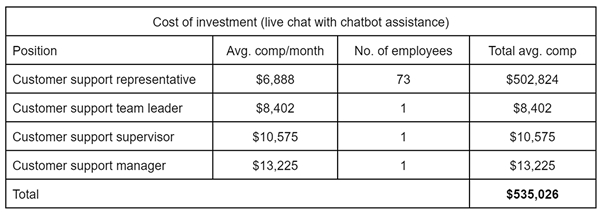
The cumulative cost during the first month of chatbot’s operation will be $538,126.
Comparing the ROIs for live chat vs chatbot support
Assuming a constant total value of $3,000,000, the ROI on customer support, with and without chatbot assistance, can be calculated as follows:

If you compare the live chat ROI with chatbot ROI, it is clear to see how much more profitable chatbot support can be. Even accounting for additional costs and salaries for an in-house development team, the bulk of investment for a chatbot is linked to the one-time initial setup.
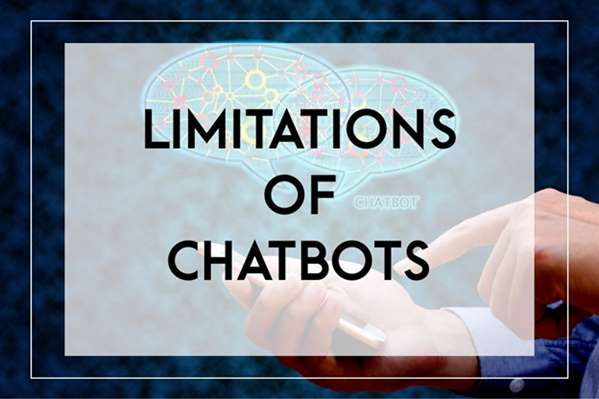
Potential limitations of chatbot
One common hesitation in adopting ai chatbots may be the over-reliance on automation. After all, about 69% of US customers have a preference for live chat support.
Of course, there are drawbacks to chatbot support. The first is the immense installation costs that might be prohibitive for smaller businesses. Then there is also the distrust in a chatbot’s capability to provide adequate service. Some major complaints that consumers have against chatbot support include “lack of understanding” and “incapability to solve complex issues”. 46% of consumers believe that chatbot support is a tactic employed to deny them easy access to a live agent, while 60% of consumers would rather have a human address their requirements than a chatbot.
Conclusion
The data is stacked in favour of chatbots. They can help save about 30% in customer service investments. They have been projected to save businesses about $8 billion on such investments and about 2.5 billion hours by 2023.
This time saved can be utilized in developing further business strategies, attracting more customers.




